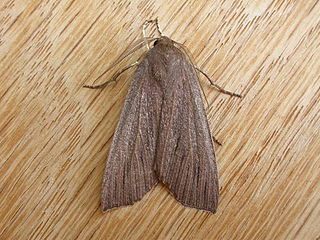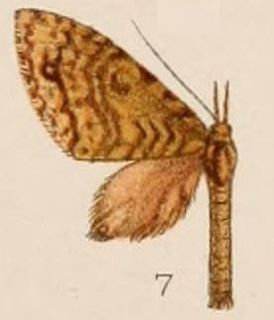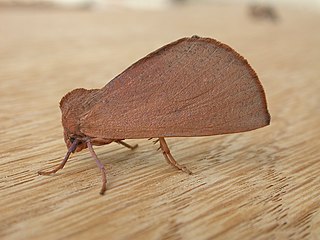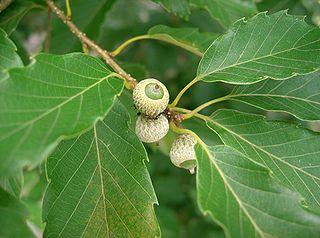
The ora serrata is the serrated junction between the retina and the ciliary body. This junction marks the transition from the simple, non-photosensitive area of the ciliary body to the complex, multi-layered, photosensitive region of the retina. The pigmented layer is continuous over choroid, ciliary body and iris while the nervous layer terminates just before the ciliary body. This point is the ora serrata. In this region the pigmented epithelium of the retina transitions into the outer pigmented epithelium of the ciliary body and the inner portion of the retina transitions into the non-pigmented epithelium of the cilia. In animals in which the region does not have a serrated appearance, it is called the ora ciliaris retinae.

Banksia serrata, commonly known as the saw banksia, the old man banksia, the saw-tooth banksia or the red honeysuckle and as wiriyagan by the Cadigal people, is a species of woody shrub or tree of the genus Banksia, in the family Proteaceae. Native to the east coast of Australia, it is found from Queensland to Victoria with outlying populations on Tasmania and Flinders Island. Commonly growing as a gnarled tree up to 16 m (50 ft) in height, it can be much smaller in more exposed areas. This Banksia species has wrinkled grey bark, shiny dark green serrated leaves and large yellow or greyish-yellow flower spikes appearing over summer. The flower spikes, or inflorescences, turn grey as they age and pollinated flowers develop into large, grey, woody seed pods called follicles.

Banksia aemula, commonly known as the wallum banksia, is a shrub of the family Proteaceae. Found from Bundaberg south to Sydney on the Australian east coast, it is encountered as a shrub or a tree to 8 m (26 ft) in coastal heath on deep sandy soil, known as Wallum. It has wrinkled orange bark and shiny green serrated leaves, with green-yellow flower spikes, known as inflorescences, appearing in autumn. The flower spikes turn grey as they age and large grey follicles appear. Banksia aemula resprouts from its woody base, known as a lignotuber, after bushfires.

Banksia ser. Banksia is a valid botanic name for a series of Banksia. As an autonym, it necessarily contains the type species of Banksia, B. serrata. Within this constraint, however, there have been various circumscriptions.

Capusa senilis, the black-banded wedge-moth, is a moth of the family Geometridae. The species was first described by Francis Walker in 1857. It is found in the south-eastern quarter of Australia.

Scirpophaga is a genus of moths of the family Crambidae described by Georg Friedrich Treitschke in 1832. Asian species include significant rice stemborer pests.
Chrysopera is a monotypic moth genus of the family Noctuidae erected by George Hampson in 1894. Its single species, Chrysopera combinans, was first described by Francis Walker in 1857. It is found from in the Indo-Australian tropics of India, Sri Lanka, Nepal, China east to New Guinea, Queensland, the Solomon Islands and Fiji.

Dypterygia is a genus of moths of the family Noctuidae.

Comostola is a genus of moths in the family Geometridae erected by Edward Meyrick in 1888. They are found primarily in Asia and Australia.

Euchlaena is a genus of moths in the family Geometridae erected by Jacob Hübner in 1823.

Nisista is a genus of moths in the family Geometridae erected by Francis Walker in 1860.

Palleopa is a monotypic moth genus in the family Geometridae. Its only species, Palleopa innotata, the finely-streaked crest-moth, is known from Australia, including Tasmania. Both the genus and species were first described by Francis Walker in 1866.

Parosteodes is a monotypic moth genus in the family Geometridae described by Warren in 1895. Its only species, Parosteodes fictiliaria, the dodonaea moth, was first described by Achille Guenée in 1857. It is found in Australia.

Sauris is a genus of moths in the family Geometridae erected by Achille Guenée in 1857.

Fisera perplexata, the light-tan crest-moth, is a moth of the family Geometridae first described by Francis Walker in 1860. It is found in Australia.

Eupitheciini is a tribe of geometer moths under subfamily Larentiinae, often referred to as pugs. The tribe was described by Tutt in 1896.
Pseudopostega serrata is a moth of the family Opostegidae. It is widespread in Costa Rica up to elevations of 1,520 meters. It has also been recorded from Ecuador and southern Panama.

Tiracola plagiata, the cacao armyworm, is a moth of the family Noctuidae. The species was first described by Francis Walker in 1857. It is found from south-east Asia, South India, Sri Lanka, Myanmar to the South Pacific Islands, including the northern two-thirds of Australia.

Quercus serrata, the jolcham oak, (Chinese: 枹栎; pinyin: bāolì, 小楢 is an East Asian species of tree in the beech family. It is native to China, Taiwan, Japan, and Korea.

Yoyetta is a genus of cicadas in the family Cicadidae. The genus was erected in 2012 to accommodate nine Australian species previously assigned to the genus Cicadetta.



















